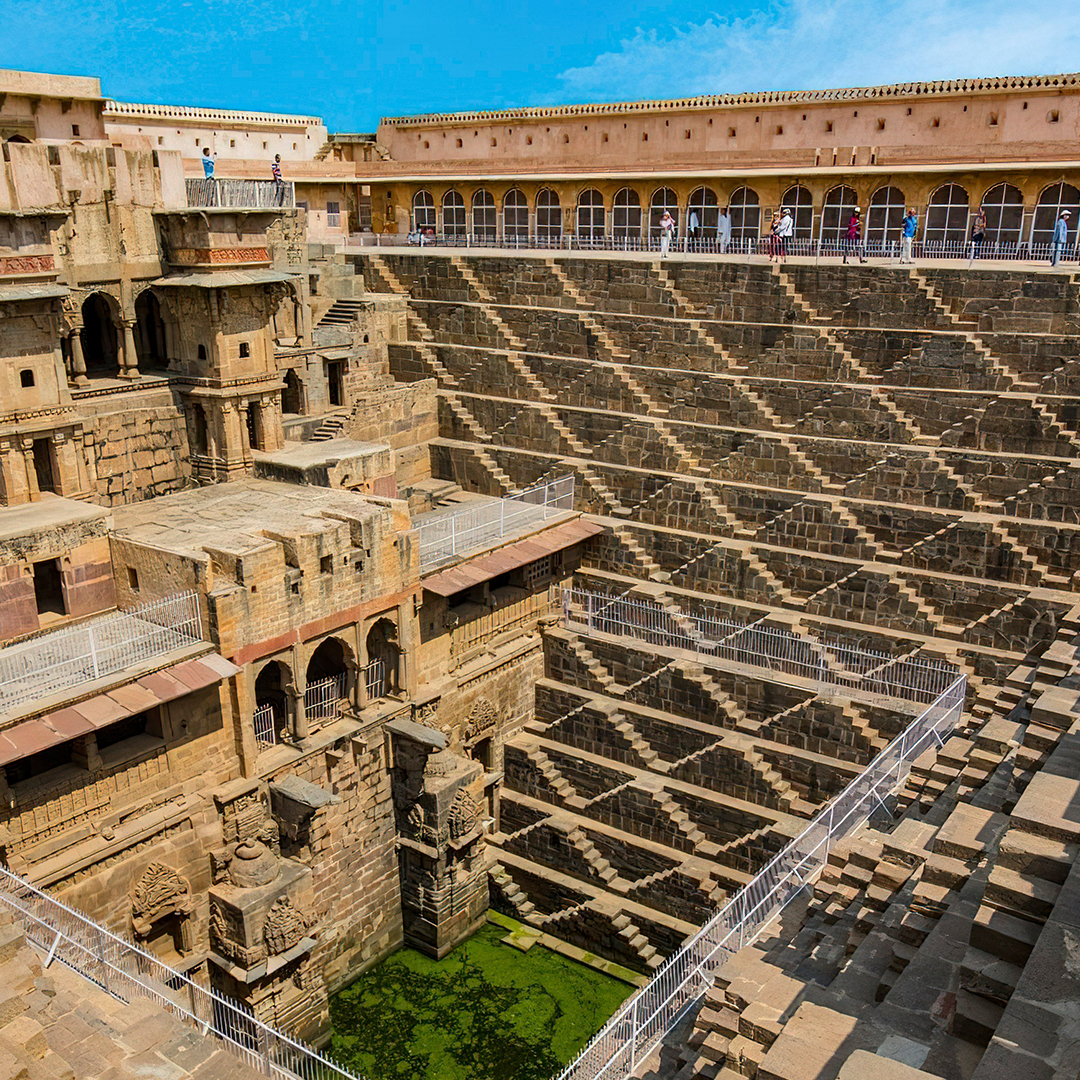Chand Baori is claimed to be called after Raja Chanda, a local Nikumbh dynasty monarch. Nevertheless, no inscriptional evidence for the building of the Chand Baori or even the surrounding Harshat Mata Temple has been discovered. The Baori can be dated to the 8th-9th century based on parallels in form and carvings with the tiered shrines of Paranagar and Mandore. It was most likely built before the temple. Chand Baori is one of the rare step-wells in India that has "two classical phases of freshwater architecture in a single location," according to Morna Livingstone in Step to Liquid: The Historic Stepwells of India.
Rajasthan is a desert. Thus, the concept and ultimate construction of Chand Baori were designed to preserve quite as much water as possible. The building of wells, canals, tanks, and dams, as well as their proper management and upkeep, was mentioned in ancient Indian texts.
Several of these operations were consolidated at this location to enable easy access to nearby water. During moments of extreme heat, the air just at the bottom of the well stays 5-6°C warmer than at the top, and Chand Baori was utilised as a communal gathering spot for people. An aesthetic quality pavilion and the royal resting room may be found on one end of the well.
The step-earliest well's components originate from the 8th century. The site now includes an upper palace building, which can be seen from the tabulating. The Chauhan monarchs employed arches, while the Mughals used cusped arches. Tourists can no longer enter these rooms. During the Mughal Empire, the upper storeys with the collonaded arcade were constructed around the 18th century. In addition, the Mughals built art museums and stone walls all around well. Today, there exist traces of historical sculptures and carvings that were thought to be in the temple or various rooms. A pilgrimage site, the adjoining shrine of Harshat Devi, goddess of gladness, built a compound with a well. Many of these stepwells, such as Chand Baori, fulfilled many functions besides taking water and playing a crucial role in religious or ritual activities.
An annual three-day Abhaneri festival is held at the start of Sharad Navratras. Every year, it really would fall ten days ahead of Durga puja or thirty days before Diwali. My guide informed me that the stepping well is available to the public for the next three days. In fact, a diving competition occurs among the village's young men.
It's not surprising given that Navratras worship Shakti, and there's a Harshat Mata temple just next to the Baori. This location attracts a large number of visitors. It is one of the few localities in India where foreign visitors outnumber Indians.
To visit the location, you can book Jaipur tour packages; there are one-day Jaipur tour package packages, and you can reserve a cab based on the number of people. We offer online booking services.

Abhaneri Chand baori stepwell 3,500 narrow stairs image
Chand Baori is made up of 3,500 tiny stairs spread across 13 storeys. Rajasthan is a desert. Thus the concept and final construction of Chand Baori were designed to save as much water as possible.
Chand Baori (Stepping Well) is open daily from 12:00 AM until 11:59 PM.
Best online cab service; I booked it online and rented it for the day. I must say the best service ever.
Be the first to find out latest tours and exclusive offers and get 15% off your first booking.